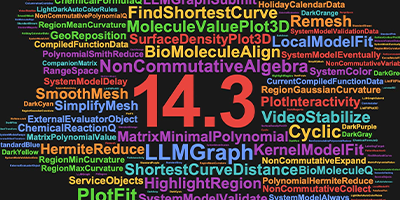Explore the Computable Document Format: Free Virtual Workshop
Ever since we launched the Computable Document Format (CDF) last summer, people have been excited about the ease of deploying interactive documents to their clients and on their websites, and we’re seeing CDFs used to enhance blogs, textbooks, and other applications in many different areas.

Now we’re holding a virtual workshop where you can hear from the author of an award-winning CDF textbook, chat with Wolfram experts in publishing and application development, and learn how to get started with your own projects.
The Wolfram CDF Virtual Workshop will feature a keynote by Conrad Wolfram plus talks and Q&A sessions with Wolfram experts.
The virtual event will be held Tuesday, April 24, at the following times:
* 8am–noon Eastern Daylight Time (EDT); 1pm–5pm British Summer Time (BST)
* Repeat session: 1pm–5pm EDT; 6pm–10pm BST
Virtual seats are limited—see the event schedule and register today!



I have a request to the great visualizers with Mathematica: currently, there’s not a single CDF demonstration showing the properties of tensegrity — especially the nonlinear stress/strain response of a tensegrity icosahedron (see video and references at http://www.youtube.com/watch?v=K1NsRlhxuwE ). A demonstration could simulate someone squeezing a pair of the parallel struts, or it could show an icosahedron resting on one of its triangular faces while a load was being stacked on top of the triangle at the top of the structure.
It would be cool to get readings of the stress/strain response of the individual tendons plus the stress/strain of the structure as a whole. Tendon stress could be shown with a number or by playing the tone that a plucked tendon would make. Jobst Brandt notes this mechanism that wheelbuilders use to get audible feetback on spoke tension while building a wheel in “The Bicycle Wheel”.
Very few people understand Fuller’s remarkable discovery of this stress/strain response from the 1970s. Further, very few understand that it shows the general principle of how tensegrity carries loads: tendons at a higher point on their elastic modulus are stronger and capable of carrying the load tensionally. Until there are some world-class simulations showing this behavior, I don’t think we’ll ever get it as a society. Thank you!
I am professor of Mathematics in Faculty of Engineering. In my lecture when using some files of Wolfram CDF Player we making Mathematics more attractive and not only theoretical and can be imagine more and more.